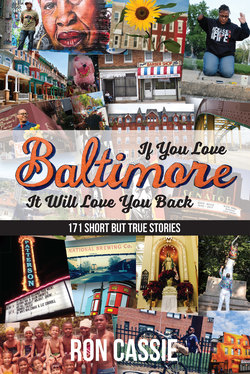Читать книгу If You Love Baltimore, It Will Love You Back - Ron Cassie - Страница 18
На сайте Литреса книга снята с продажи.
ОглавлениеDowntown
Greene Street
Sept. 3, 2010
6. Golden Hours
Several minutes before the helicopter’s estimated arrival, two nurses take a dedicated elevator to the roof. At night, they can spot the helicopter a dozen or more miles away, watching as a small light comes into view. If the accident occurred in southern Maryland, for example, it will appear off in the distance past M & T Bank stadium. On a bright, glaring day like this, the medevacs pop into view more suddenly, dropping down upon R Adams Cowley Shock Trauma Center with surprising swiftness.
Not unexpectedly, on this Labor Day Weekend, accident victims, assault victims, and transfers from other hospitals begin arriving Friday afternoon.
At 2:51 p.m., it’s a 48-year-old man, crushed by a tree. At 3:40, it’s a patient who fell from a tree while intoxicated. At 5:14 p.m., it’s motorcyclist, found in the woods with a severed leg, who is flown in. His leg arrived next to him in a cooler, but could not be saved. Four minutes later, a 36-year-old female arrives. An unrestrained backseat passenger involved in a car accident, she’d been ejected from the automobile.
Later, an 81-year-old woman arrives. She’d fallen while riding a bike. One minute after her, a 22-year-old woman who’d been pushed from a car come in on a stretcher. At 8:30 p.m., a pedestrian is flown in after being struck by a tractor-trailer. At 10:35, a gun shot victim, with bullet wounds to the neck, is brought in after being found unresponsive in alley. He died two hours later.
By 10:45 p.m. Friday, 15 people had been admitted. By 5 p.m. Saturday, another 24, including a 15-year-old who been shot in the face below his left eye.
As the boy is wheeled into a bay, accompanied by police, conscious and wide-eyed scared, blood dripping from his face, neck swollen with fluid, a dozen and a half doctors, fellows, residents, nurses and trauma technicians surround his stretcher.
In a well-rehearsed choreography, the teenager’s clothes are cut off by one nurse as another asks for his mother or father’s phone number. An I.V. is started. His blood pressure is checked. Blood is drawn. Doctors examine him for exit wounds. Blood is suctioned from his mouth. An anthiesolgist begins to sedate him, so he can be intabated. Stable at the moment, he’s readied for X-rays.
“I see where it is,” Dr. Deb Stein says, minutes later, examining
three-dimensional images on her computer screen and staring at a bullet lodged in the teenager’s lower neck/upper chest area. “But how did it get there?”
Fortunately, the bullet richotted down after entering his face and not into his skull.
Fifty years ago, Dr. R Adams Cowley, a pioneer in open-heart surgery, developed the first clinical shock trauma unit in the country, putting together a small staff and equipment—including two, and later four, beds—at the University of Maryland Medical Center. It was known as the death lab, at first, until patients given up for dead began to survive. Cowley’s credited with coining the idea of “the golden hour,” or as Dr. Thomas Scalea, Shock Trauma’s physician-in-chief and the driving force for the last 13 years, explains, “the concept that trauma is a time-related disease.”
By the end of three-day weekend, the total was 107 patients. Many were discharged within a day or so, but the 104-bed hospital remained filled. As usual.
Most U.S. trauma centers typically treat about 3,000-3,5000 patients a
year. Shock Trauma treats more than 8,000 annually, the largest facility of its kind in the U.S.
Ultimately, Labor Day Weekend proved not so dramatically different than other summer weekend. The 13 trauma resuscitation bays routinely and critical care beds often get filled, with patients doubling up.
“We all have very definitive roles and I think as a result, we provide a very high level of care,” says Stein, who has been at Shock Trauma since 2002. She also stresses the second pace, while not for everyone, fits her personality.
“Some people like knowing what to expect, I like not knowing what is going to happen every day,” she says. “But the other thing, I love, too, is seeing people get better.”
